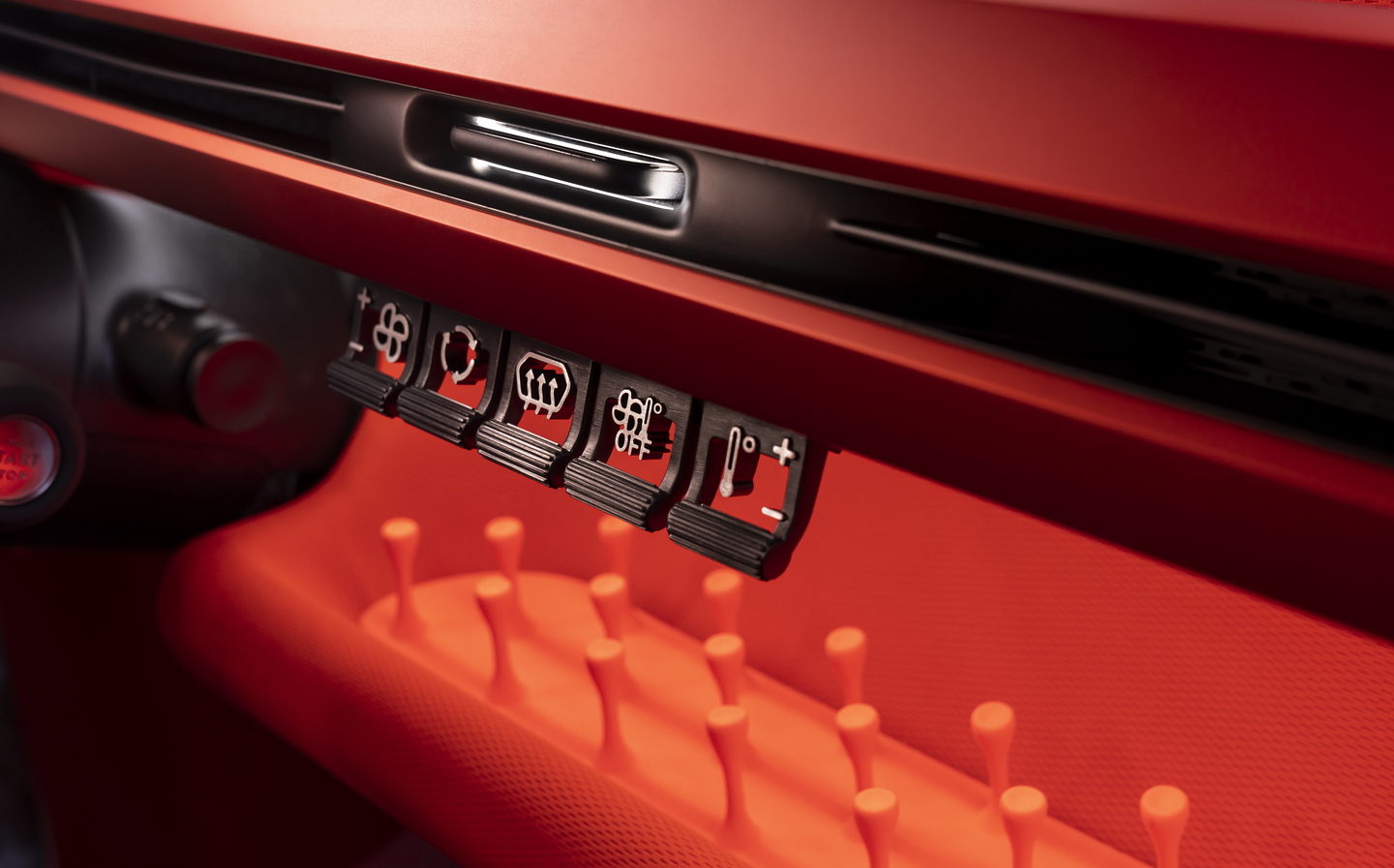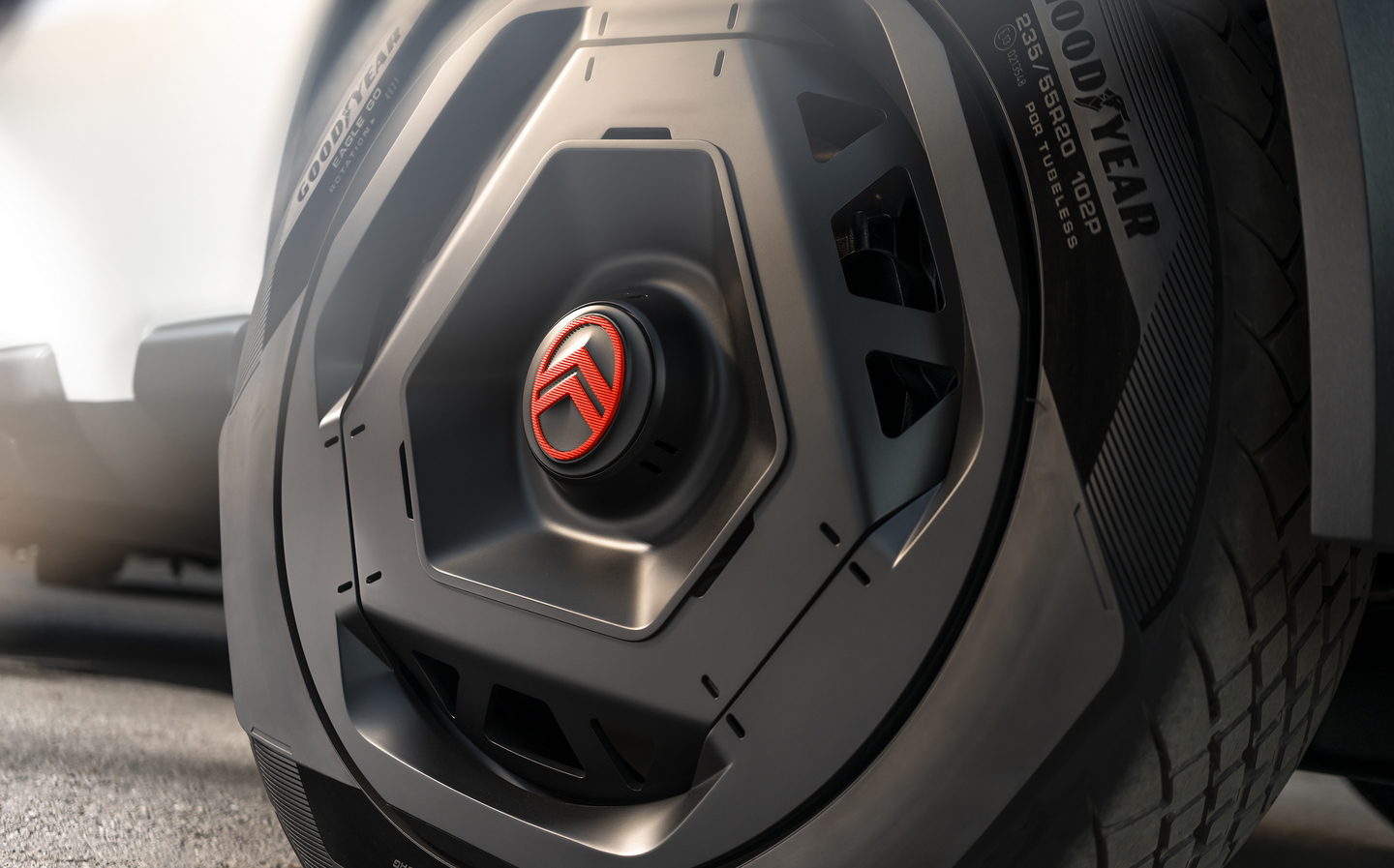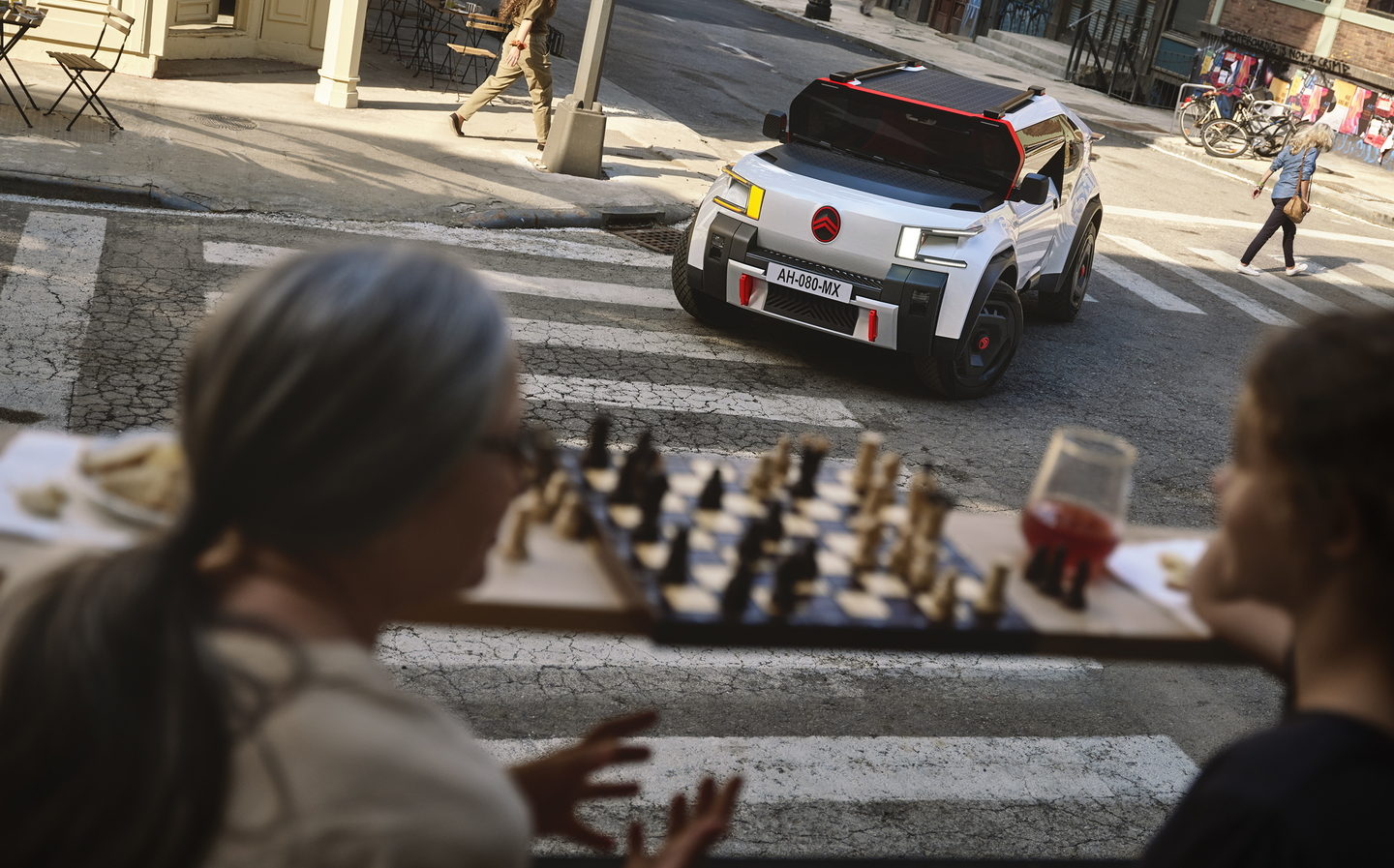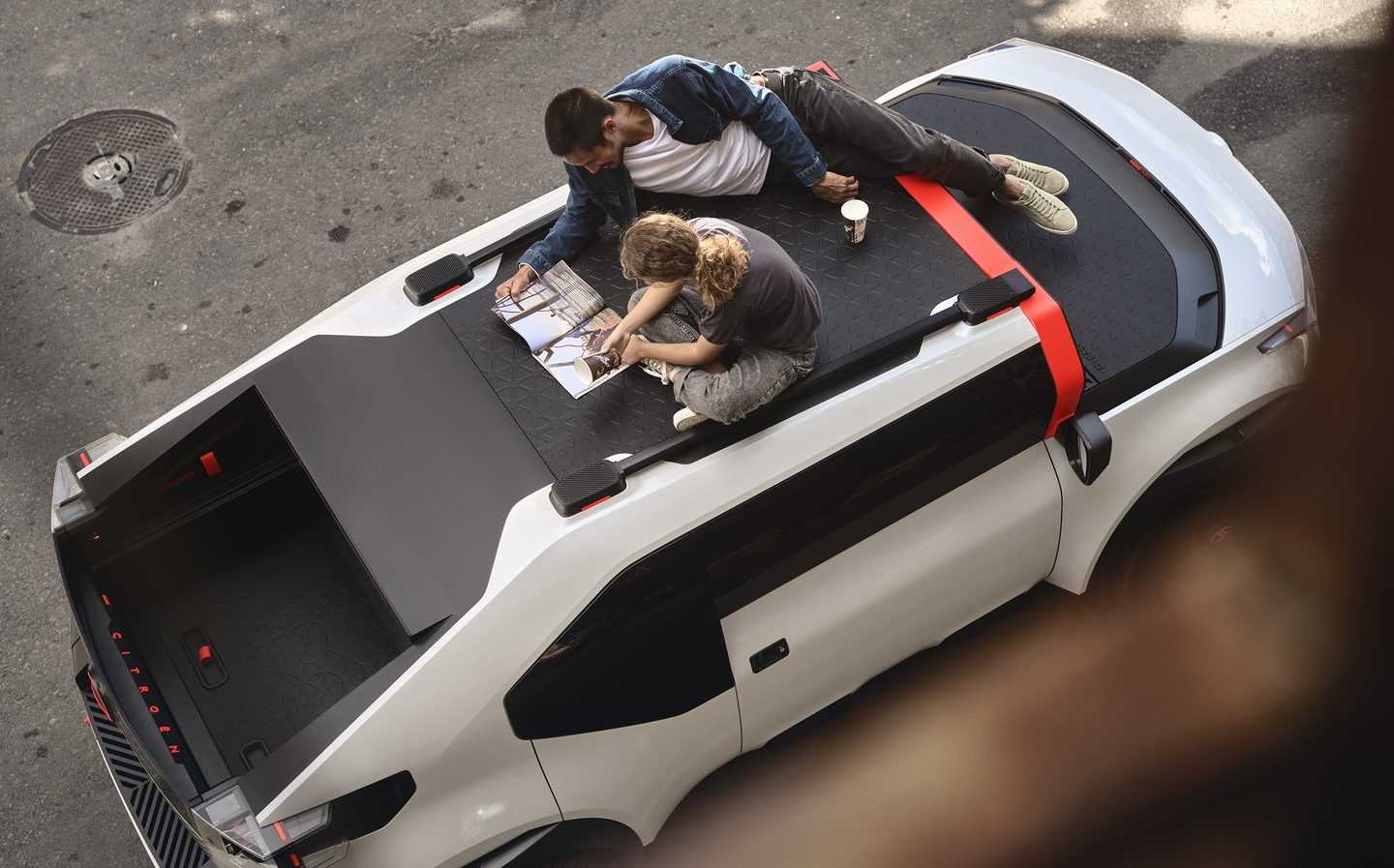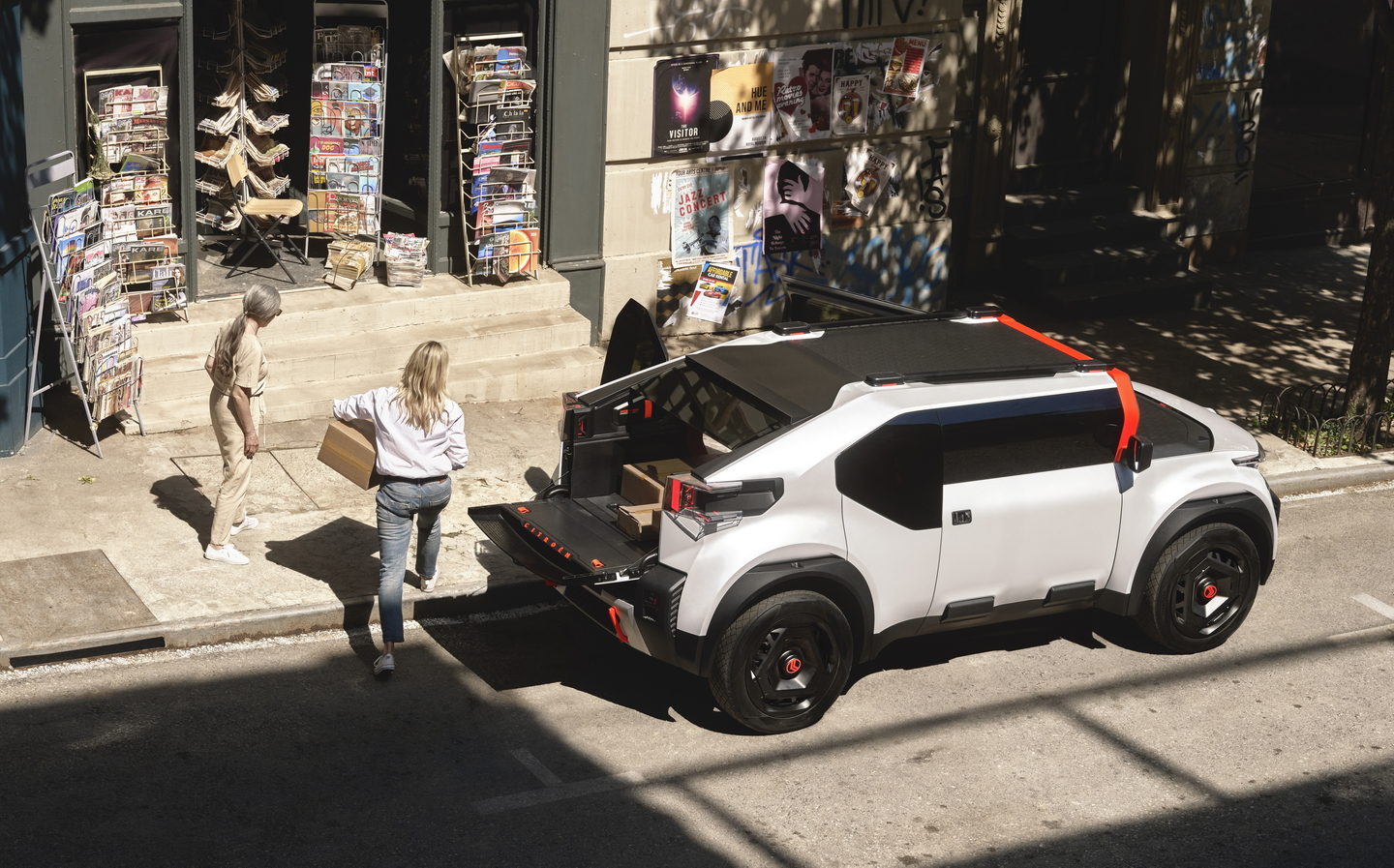Citroën Oli concept revealed with cardboard panels and focus on sustainability
Less is more
Citroën has unveiled a new concept car that presents an innovative set of ideas on how to reduce the scourge of bloat and excess in modern electric car design.
Dubbed the Oli, the concept showcases Citroën’s thoughts on how to produce a vehicle that, while still being a practical family runabout, is easy to produce, efficient to run and is built from long-lasting materials.
“A typical mid-70s family car weighed around 800kg and was 3.7 m long and 1.6m wide,” said Citroën’s CEO, Vincent Cobée.
“Today’s equivalents have grown to more than 1,200kg, at least 4.3 m long and 1.8m wide. Some even weigh more than 2,500kg.
“Legal and safety requirements have driven some of this, but if the trend continues and we carry on parking these vehicles 95% of each day and driving 80% of journeys with a single occupant, the conflict between the need to protect our planet and the future promise of sustainable, electrified mobility will not easily be resolved.”

The Oli, however, isn’t some micro-car like Citroën’s baby Ami and instead occupies a similar footprint to a compact family SUV.
With ease of production in mind, most of the body panels are flat and the bonnet, roof and rear panels and are made from recycled corrugated cardboard formed into a honeycomb sandwich structure between fibreglass reinforcing sheets. These are strengthened and waterproofed by a polyurethane-based resin created by chemical giant BASF, and, although some 50% lighter than if they were made from steel, they can still support the weight of an adult.
This could make the car useful, Citroën suggests, as a platform for household chores such as pruning trees or cleaning windows.
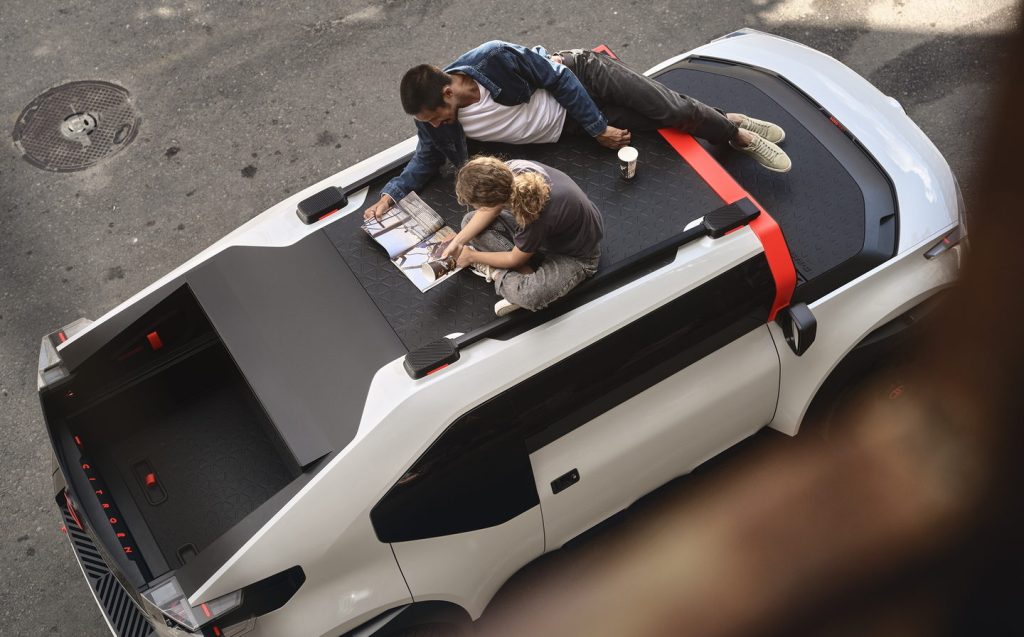
“All of the key design elements on Oli are perfectly horizontal or vertical, which is something we want to explore,” said Pierre Leclercq, Citroën’s head of design.
“The usual approach would be to go for dynamic lines and other vehicle makers wouldn’t dare to do what we have done — but we are looking for honesty and efficiency in the form language.”
Even the windscreen is vertical because it allows for the shortest distance between the top and bottom of the window aperture and uses the smallest amount of glass. As well as reducing weight and complexity, the smaller screen is less expensive to produce or replace and lessens the exposure of occupants to the effects of the sun.
Citroën also estimates that this helps reduce the power demand on the Oli’s air conditioning system (and thus batteries) by up to 17%.

“You could argue a vertical screen is less aerodynamic, but we don’t expect people to drive this kind of vehicle at 200km/h (124mph),” explained Pierre Sabas, Citroën’s head of advanced design and concepts.
“We see it being most useful in urban and suburban areas where people reduce speed and are aware of the environmental and safety aspects of everyday mobility. That is why we have limited Oli’s top speed to a maximum of 110km/h (68mph).”
Little attempt has been made either to hide the Oli’s construction, with frames, screws and hinges all visible.
One of the Oli’s party pieces is the fact that with a clever folding tailgate and removable load bed panel arrangement, the vehicle can convert into a sort of pickup with extra space for oversized loads.
The interior of the Oli is as rational as the outside, with, rather than a dashboard sporting an endless array of screens and buttons, a single symmetrical beam running across the width of the vehicle from which hangs the steering column and wheel on one side, a smartphone dock and five toggle switches for the air conditioning system in the centre.

All of this uses just 34 parts versus around 75 in a normal small family hatchback, and the idea of using an occupant’s smartphone in lieu of building-in an infotainment screen borrows a leaf from Dacia’s Jogger MPV and its own minimalist Manifesto concept.
Instead of “bulky automotive armchairs”, the Oli gets tubular frames onto which are mounted a base cushion and a mesh backrest. This approach reduces the number of parts involved from around 37 to just eight and the design is such that the seats can be easily dismantled so as to, for example, replace the bright orange mesh covering with something in another colour.
Powering the Oli is a relatively small 40kWh battery with a targeted range of 250 miles. Citroën believes that, thanks to the Oli’s one-ton weight and other efficiency measures, that kind of range should be eminently achievable, with energy consumption as low as 6.2 miles per kilowatt hour. Good EVs currently manage between 4 and 5 miles per kWh.
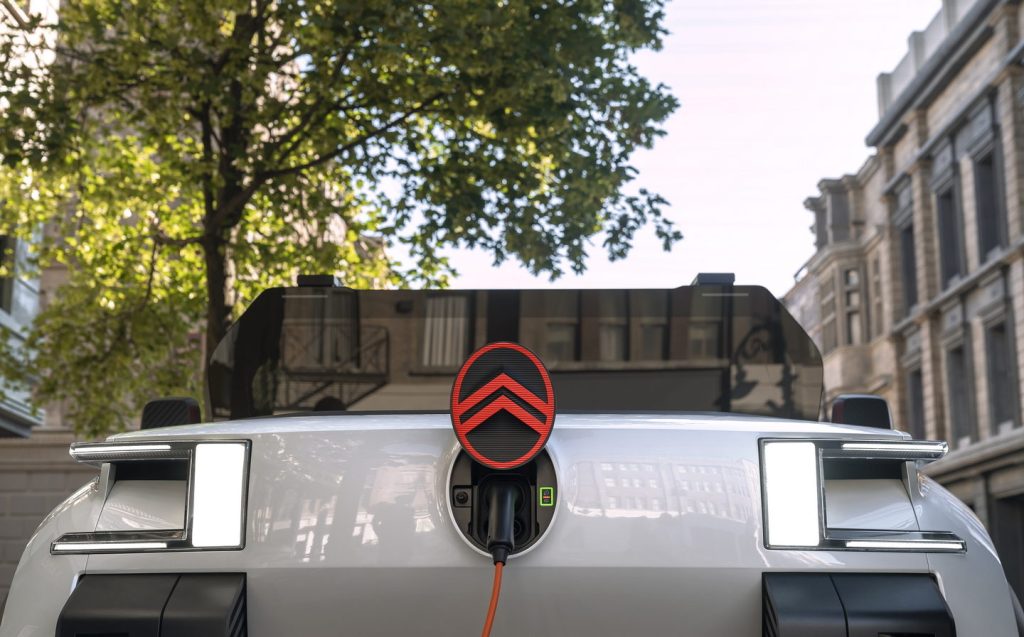
“It’s a vicious circle — delivering more electric driving range requires a bigger battery,” said Laurence Hansen, head of product development at Citroën.
“Adding more technology requires more power, which also means a bigger battery. All of this adds weight, complexity and cost, and the more a vehicle weighs, the less efficient it becomes.
“Oli shows what can happen when we take a completely different approach.”
“Ultimately, it’s a lifestyle choice more than a vehicle choice. You can choose to pay for all of the latest features and artificial intelligence which you only use 2% of the time when driving, or you can ask yourself ‘what is the responsible thing to do and how much of this do I really need?’” said Hansen.
“Oli is a way to say enough! I do want something innovative, but I want it straightforward, affordable, responsible and long lasting. Oli is all of that, and a huge amount of pleasure in your life too!”
Don’t expect to see anything based on the Oli concept appear in Citroën showrooms any time soon though.

“Oli is a working platform to explore ingenious ideas that are realistic for future production,” said Hansen.
“They won’t all come together, nor in the physical shape you see here, but the high level of innovation being showcased is inspiring future Citroëns.”
The Oli also marks one of the first outing for Citroën’s new logo, which retains its double-chevron design, but harks back to the firm’s old logo from 1919.
Related articles
- After reading about the new Citroen concept car, you might like to check out the mad Renault R5 Turbo 3E concept drift car
- The Dacia Manifesto concept takes a similar approach to the Citroen Oli
- And click here to see all the car makers’ electric vehicle plans
Latest articles
- Aston Martin Valkyrie AMR-LMH hypercar hits track ahead of 2025 Le Mans challenge
- Porsche has begun testing the electric Cayenne
- Cupra Leon 272 eHybrid 2024 review: Bigger battery, better tech … but is it a Cupra?
- Porsche 911 GTS 2024 review: Hybrid heresy or more Stuttgart genius?
- Extended test: 2023 Vauxhall Astra Sports Tourer GS PHEV
- Ford Capri revival has faced a lot of flak… but are buyers put off? Here’s what visitors to the Festival of Speed had to say
- F1 2024 calendar and race reports: What time the next grand prix starts and what happened in the previous rounds
- ‘No timeframe’ for how long Volvo’s returning estate cars will be on sale in UK
- Kia Picanto 2024 review: Updates add spice to cute Korean city car




